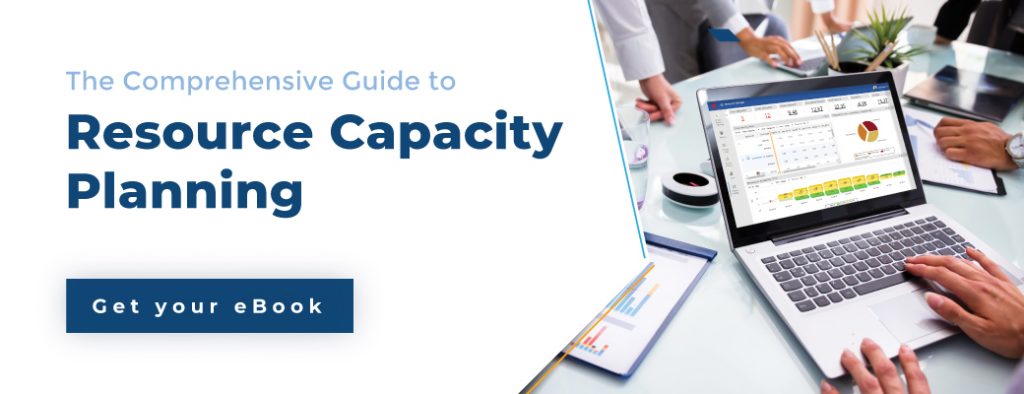Projects work on a predetermined budget and deadline, and their success is vastly dependent on the intelligent use of resources. On the enterprise level, resources can be human, i.e., the workforce and non-human such as facilities, equipment, vehicles, and more.
Resources are a significant investment, and businesses strive to manage these resources effectively and efficiently to maintain profitability and sustainability.
Once the project manager initiates the resource requisition, the resource manager starts planning to fulfill those positions. Resource scheduling, a critical element of resource planning, helps assign resources to the projects based on skills, availability, cost, among other selection criteria.
But, resources are usually finite and come at variable costs. Any resource adjustments on projects can be justified only if necessary, and when one project does not suffer at the cost of another. Besides, knowledge transfer enabling replacements to perform at the same level takes time and can affect productivity. So, unless absolutely necessary, pulling out resources from ongoing projects must be avoided.
Many organizations still rely on legacy tools to manage and schedule resources. According to an FSN survey, 71% of organizations still use spreadsheets to collect data which are time-consuming, limited, and hard to maintain. A robust resource scheduling solution overcomes the limitations of spreadsheets and helps in optimal usage of the existing resource pool. Before delving deep, let’s go over some definitions:
Resource scheduling definition
Resource scheduling is one of the essential steps in the resource planning process. It identifies and allocates resources for a specific period to different activities of a project or non-project work.
Also, it coordinates resource requests and allocations between project managers and resource managers to recognize, reserve, and assign the right resources.
Why is resource scheduling important in project management?
Project demands are continually changing, and resource scheduling is crucial for agile resource planning. Resource scheduling is necessary for resource planning and has the following steps:
- Listing tasks along with their duration and effort estimates.
- Recognizing the constraints of each job, like deadlines, skill sets required, and location.
- Forecasting resource demand ( types and numbers ) against the capacity and identifying potential resource bottlenecks.
- Using all of this information to match the appropriate resources with tasks or jobs efficiently.
As it impacts the project’s budget, schedule, and timeline, scheduling is essential for project planning and starting of new projects.
Business benefits of resource scheduling:
Listed below are 7 powerful advantages of resource scheduling in project management:
Provide 360-degree visibility within the matrix organization:
A matrix organization has competencies spanning across geographical boundaries where resources can have multiple reporting lines. For multidimensional scheduling capabilities, organizations need 360-degree visibility across the enterprise.
Resource scheduling system consolidates all resource-related information on a centralized repository. It keeps one informed of all allocations and availabilities and manages the complex scheduling of matrix organizations effortlessly. Visibility helps to identify and leverage cost-effective global resources across matrix boundaries, avoid double bookings, and provide a single version of the truth across the enterprise.
Eliminate silos of spreadsheets for resource scheduling:
A survey by Marketwatch points that, on an average, 88% of spreadsheets have some kind of errors. The data compilation and analysis using spreadsheets for resource scheduling is time-consuming and cumbersome. Besides, spreadsheets fail to provide real-time insights, leading to double bookings caused by data discrepancy and redundancy.
On the other hand, a specialized scheduling techniques centralizes all information onto a single platform. Any updates or changes made are visible in real-time across the system, leaving no chances of ambiguity. Resource scheduling also captures the time off when employees take a vacation, family leaves, or public holidays. It keeps the resource plan on track by providing visibility of other available resources and recognizing when it needs changes.
Allocate competent resources to the right opportunity:
Resource scheduling solution consolidates information on resources, bookings, and projects into a single resource plan. Using advanced filters such as skills, qualifications, experience, location, availability, cost, among other selection criteria, one can assign competent resources to suitable opportunities.
The software also maintains up-to-date competency information to match skill set proficiency with the right task. Employees can update their competencies themselves, and supervisors validate the authenticity of the same.
Resource scheduling helps distribute resources across all projects instead of deploying them only on high-priority projects. Under favorable conditions, it helps replace high-cost local resources with low-cost global resources. It thus facilitates the ‘best-visible-best-fit’ instead of ‘first-visible-first-fit’ resource allocation for maximum profitability.
Increase profitability using forecasting techniques:
Resource scheduling system provides foresight into billable, strategic, and non-billable utilization. Flexible heat maps enable stakeholders to maximize resource utilization. As profitable utilization is a determinant of business efficiency, forecasting utilization aids in taking remedial actions to achieve the same. Accordingly, mobilizing resources from non-billable to billable/strategic work or proactively selling excess capacity improves profitability.
Capacity planning helps forecast excesses or shortages in the future. It analyzes the gap between resource demand against capacity and helps formulate a plan to bridge this gap proactively. If it predicts a shortfall, training and hiring permanent or contingent workforce creates an optimally balanced and skilled resource pool.
For excesses, decisions to bring forward project timelines or market capacity improve profitability without wasting excess capacity. Capacity planning thus eradicates wasteful hiring and firing cycles and future proofs your workforce against market volatilities.
Forecasting project financials like cost, revenue, overheads, and project margins enable taking preventive measures and controlling project costs in advance. These insights are useful in reducing costs and improving profitability by creating an appropriate band mix of resources.
Address resource shortages in a dynamic business environment
Businesses are ever-evolving and unable to fulfil dynamic project demands due to skill shortages are quite common.
Scheduling software can address resource shortages amid continually changing project demands.
If there is a need for a niche skillset to start a new project, scheduling software provides visibility to locate a matching resource within the organization. As these resources are usually actively allocated in projects, applying the out rotation policy will help start a new project. To fill the vacancy, another resource having minimum qualification criteria can serve as backfill. Out rotation helps kick start new projects, and backfills ensure that current projects don’t suffer.
Scheduling software helps leverage global resources’ skill sets across matrix boundaries, which is cost-effective without compromising quality. Besides, after evaluating every project’s profitability, it prioritizes the resource allocations.
Enhance employee engagement to improve productivity:
Scheduling software eliminates the chances of allocating under or overqualified resources on tasks. If underqualified for the job, resources feel frustrated and delay delivery timelines. If overqualified, boredom and a sense of deprivation seep in. In both cases, employee engagement and, subsequently, productivity is adversely affected.
The centralized information enables resource managers to consider the employee’s skills and interests before task allocation. According to Gallup, employees who utilize their skills and strength every day are 6 times more engaged. Entrusting employees with different projects provides ample skill-building opportunities and maintains their Individual Development Plan or IDP.
Integrate seamlessly within other business applications:
If resource-centric data is already captured within other business applications, it need not be entered twice within Resource Scheduling solution. It should seamlessly integrate with those applications such as CRM, ERP, HR, and PPM to create a single information repository. It will eliminate the chances of human error, data discrepancy, data redundancy, and the risk of double booking of resources.
An efficient resource scheduling tool can effortlessly integrate with everyday applications like emails (for notifications and alerts), calendar ( for automated invites/updates), and excel ( for import/ export of data ). Besides, it also streamlines the resource requesting process by initiating quick requisitions. A self-serving model helps update competencies, and the leave approval system shows resource availability in real-time.
The Takeaway
In a nutshell, resource scheduling can enhance one’s business profitability and sustainability by unleashing the maximum potential of resources. It’s forecasting power can improve utilization, protect your workforce against uncertainties, and make informed decisions.
The Glossary
The SAVIOM Solution
SAVIOM provides state of the art resource scheduling software. With over 20 years of experience working with highly valued global companies worldwide, SAVIOM also provides tools for enterprise resource management, professional service automation, and workforce planning software.
SAVIOM can help your business establish an efficient system geared towards your specific business challenges.












